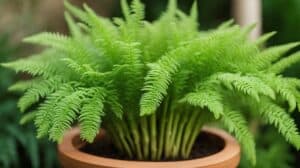Daphne Odora is a beautiful and fragrant evergreen shrub that blooms during the winter months.
It is a popular plant that is cherished by gardeners and homeowners alike.
The plant is native to China and Japan and is known for its sweet fragrance and delicate flowers.

Caring for Daphne Odora can be a bit challenging, but with proper attention and care, it can thrive and produce an abundance of fragrant blooms.
One of the most important things to keep in mind when caring for this plant is its need for well-draining soil.
Daphne Odora prefers soil that is slightly acidic and rich in organic matter.
It is also important to keep the plant well-watered, especially during the hot and dry summer months.
Getting to Know Daphne Odora
Daphne Odora is a flowering shrub that is known for its sweet fragrance and beautiful blooms.
It is a popular choice for gardeners who want to add a touch of winter interest to their landscapes.
In this section, we will take a closer look at this plant and its characteristics.
Origins and Characteristics
Daphne Odora is native to China and Japan and is a member of the Thymelaeaceae family.
It is a slow-growing shrub that can reach a height of up to 6 feet and a width of up to 4 feet. Its leaves are evergreen and are a glossy dark green color.
The flowers are pink or white and are highly fragrant. They bloom in late winter or early spring and can last for several weeks.
One of the unique characteristics of Daphne Odora is its fragrance. The flowers have a sweet, spicy scent that is reminiscent of cloves.
This fragrance is most potent in the early morning and late afternoon when the temperatures are cooler.
Varieties and Cultivars
There are several varieties and cultivars of Daphne Odora available. Some of the most popular include:
Aureomarginata: This variety has yellow-edged leaves and pink flowers.Marginata: This cultivar has white-edged leaves and pink flowers.Maejima: This cultivar has yellow-edged leaves and pink flowers.
When selecting a variety or cultivar, it is important to consider the plant’s growing conditions and the desired aesthetic effect.
Some varieties may be more suitable for certain climates or soil types, while others may be chosen for their unique foliage or flower color.
Overall, Daphne Odora is a beautiful and fragrant shrub that can add a touch of winter interest to any garden.
With its unique characteristics and varieties, there is sure to be a Daphne Odora that is perfect for your landscape.
Planting and Initial Care

Choosing the Right Location
When it comes to planting Daphne Odora, choosing the right location is vital.
This plant prefers partial shade, so it is essential to select an area that receives morning sun and afternoon shade.
Daphne Odora also prefers sheltered locations that are protected from strong winds.
Soil Preparation and Planting
Before planting Daphne Odora, it is crucial to prepare the soil adequately. This plant prefers well-draining soil that is rich in organic matter.
It is recommended to mix compost or peat moss with the soil to improve drainage and add nutrients.
When planting, ensure that the hole is twice the size of the root ball and that the plant is planted at the same depth as it was in its container.
Watering and Mulching
Daphne Odora requires regular watering, especially during the first year after planting. The soil should be kept moist but not waterlogged.
It is recommended to water deeply once a week rather than shallowly every day.
Mulching around the plant helps to retain moisture and prevent weeds from growing. It is best to use organic mulch such as bark chips or pine needles.
Overall, planting and initial care are crucial for the success of Daphne Odora.
By choosing the right location, preparing the soil adequately, and providing regular watering and mulching, this plant can thrive and provide fragrant blooms throughout the winter season.
Ongoing Maintenance

Daphne odora is a low-maintenance shrub, but it still requires some care to keep it healthy and blooming.
Here are some tips for ongoing maintenance of your Daphne odora.
Pruning and Shaping
Pruning and shaping are essential for maintaining the shape and size of the Daphne odora shrub.
It is recommended to prune the shrub after blooming in the late spring or early summer. This will promote healthy growth and flowering for the next season.
When pruning, remove any dead, damaged, or diseased branches. Also, cut back any branches that are crossing or rubbing against each other.
To shape the shrub, remove any branches that are growing out of bounds or spoiling the plant’s overall shape.
Fertilizing and Feeding
Daphne odora requires well-draining soil and does not need much fertilization.
However, a light application of a balanced fertilizer in the early spring can help promote healthy growth and flowering.
It is also recommended to add organic matter, such as compost or aged manure, to the soil around the shrub to improve soil fertility and moisture retention.
Pest and Disease Management
Daphne odora is generally resistant to pests and diseases. However, it can be susceptible to root rot if the soil is poorly drained.
To prevent this, ensure that the soil around the shrub is well-draining and not waterlogged.
If pests, such as aphids or spider mites, are present, remove them by spraying the plant with a strong stream of water or applying an insecticidal soap.
If the shrub is infected with a disease, such as powdery mildew, remove the affected leaves and dispose of them properly to prevent the disease from spreading.
By following these tips for ongoing maintenance, you can enjoy the fragrant blooms of your Daphne odora shrub for years to come.
Seasonal Care

Winter Protection
During the winter months, it is essential to protect Daphne Odora from harsh weather conditions.
The plant is vulnerable to frost and extreme cold temperatures.
Gardeners should cover the plant with a layer of mulch to insulate the roots and protect them from freezing.
It is also recommended to cover the plant with burlap or frost cloth to protect the foliage from drying out and freezing.
Spring and Summer Care
In the spring and summer months, Daphne Odora requires regular watering and fertilization to promote healthy growth.
Gardeners should water the plant deeply once a week, providing enough water to reach the root system.
It is also recommended to fertilize the plant with a balanced fertilizer every four to six weeks during the growing season.
Pruning is another essential aspect of spring and summer care.
Gardeners should prune the plant after flowering to promote bushy growth and prevent leggy growth.
Deadheading spent flowers will also encourage the plant to produce new blooms.
Preparing for Dormancy
As fall approaches, gardeners should prepare Daphne Odora for dormancy. The plant requires less water and fertilizer during this time.
Gardeners should reduce watering to once every two weeks and stop fertilizing the plant altogether.
Pruning should also be kept to a minimum during this time. Gardeners should only remove dead or diseased branches and avoid cutting back healthy growth.
It is also recommended to remove any fallen leaves or debris from around the plant to prevent the spread of disease.
By following these seasonal care tips, gardeners can ensure that their Daphne Odora thrives year-round.
Frequently Asked Questions

How should I protect my Daphne Odora during the colder months?
Daphne Odora requires protection from harsh winter conditions, especially during the first few years of growth.
Mulching around the base of the plant with a layer of organic material, such as leaves or bark, can help insulate the roots and protect them from frost.
It is also recommended to wrap the plant with burlap or a frost cloth to shield it from cold winds.
Can Daphne Odora thrive in shaded areas or does it require full sun?
Daphne Odora prefers partial shade to full sun, making it an excellent choice for gardens with dappled sunlight.
However, it can also grow in full shade, although it may produce fewer flowers.
What are the ideal conditions for potting Daphne Odora?
When potting Daphne Odora, it is essential to use a well-draining soil mix that is rich in organic matter.
The pot should have drainage holes to prevent waterlogging, and the plant should be placed in a location that receives partial shade.
How long can I expect my Daphne plant to live?
With proper care, Daphne Odora can live for several decades.
However, it is essential to note that the plant can be susceptible to disease and pests, which can reduce its lifespan.
What are the necessary steps to ensure proper winter care for Daphne Odora?
Proper winter care for Daphne Odora involves protecting the plant from harsh winter conditions, such as frost and cold winds.
It is recommended to mulch around the base of the plant with organic material and wrap it with burlap or frost cloth.
Additionally, avoid pruning the plant in late summer or fall, as this can stimulate new growth that is vulnerable to winter damage.
Is Daphne Odora resistant to frost, and if not, how can I safeguard it?
Daphne Odora is not frost-resistant and requires protection from harsh winter conditions.
Mulching around the base of the plant with organic material and wrapping it with burlap or frost cloth can help safeguard it from frost damage.
Additionally, avoid pruning the plant in late summer or fall, as this can stimulate new growth that is vulnerable to winter damage.














